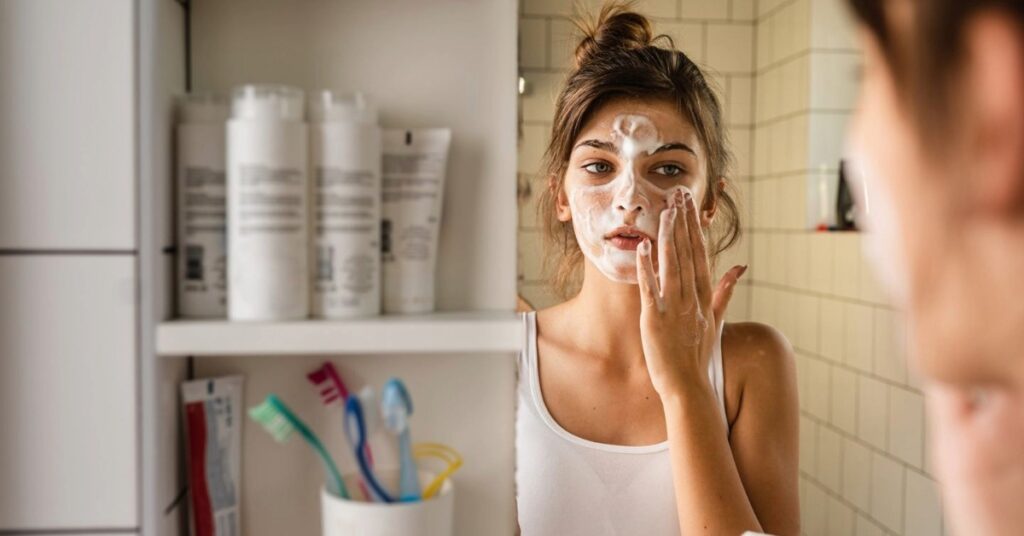Rosacea, a chronic and often frustrating skin condition, is characterised by redness, swelling, and, sometimes, acne-like breakouts on the face. For those affected, it can be more than a physical ailment; it’s an emotional and psychological battle that affects their daily lives and self-image.
The key to managing rosacea lies in finding effective rosacea cream and in a holistic approach that encompasses understanding triggers, medical interventions, lifestyle adjustments, and the meticulous selection of skincare products. This comprehensive exploration into rosacea aims to shed light on its complexities, offering strategies for those afflicted to manage their symptoms and improve their skin health.
Identifying Rosacea Triggers
Identifying rosacea triggers is akin to embarking on a personal journey of discovery, where each individual’s experiences and reactions paint a unique picture of what exacerbates their condition. Beyond the common culprits like sun exposure, spicy foods, and stress, other less obvious factors such as exercise, changes in temperature, caffeine, and even certain fruits or vegetables can serve as triggers for some.
Tracking and correlating rosacea outbreaks with specific events or substances can be enlightening, revealing previously unnoticed patterns. Utilising a diary for daily activities and diet, weather conditions, and emotional states enhances the ability to pinpoint triggers more accurately. This proactive approach empowers individuals to adopt preventive measures more effectively, tailoring their lifestyle choices to avoid known triggers and, in turn, manage their rosacea with greater confidence and control.
Medical Treatments for Rosacea
For individuals grappling with facial redness, exploring medical treatments for rosacea is essential for effective management. The options available include oral antibiotics, which target inflammation internally, and topical applications like prescribed rosacea cream, designed to soothe and heal affected areas directly. Advanced laser treatments promise to diminish visible blood vessels and persistent redness.
However, the efficacy of these treatments varies, underscoring the need for a personalised approach guided by a dermatologist. This tailored strategy ensures that treatment aligns with the individual’s type and severity of rosacea, maximising the likelihood of symptom relief and skin improvement.
Incorporating skin-loving ingredients such as Vitamin E, Niacinamide, and Panthenol B5, along with a powerful four-way natural soothing complex, into rosacea relief creams can provide additional support in calming and nourishing irritated skin, offering fast relief without the need for a prescription.
Incorporating creams enriched with skin-loving ingredients can complement medical treatments for rosacea by providing additional nourishment and support to irritated skin. By harnessing the power of antioxidant Vitamin E, Niacinamide B3, and Panthenol B5, these creams work synergistically to soothe inflammation and enhance the skin’s natural barrier function, promoting faster healing and symptom relief.
Lifestyle Modifications for Symptom Management
Living with rosacea often requires adjustments beyond medical treatment, with lifestyle modifications playing a pivotal role in symptom management. Protecting the skin from sun exposure with high-SPF sunscreen, avoiding known dietary triggers, and embracing a gentle skincare regimen can reduce flare-ups.
Furthermore, since stress is a well-known trigger, incorporating stress-reduction techniques into daily life—such as meditation, exercise, or hobbies—can alleviate rosacea symptoms and enhance overall well-being. While seemingly minor, these changes can impact the frequency and severity of rosacea flare-ups, empowering individuals to maintain control over their condition.
Skincare Routine for Rosacea-Prone Skin
For those with rosacea, daily skincare is more than a routine; it’s a therapeutic ritual that requires careful consideration. The goal is to nurture and protect sensitive skin without triggering irritation. This means selecting skincare products specifically formulated for sensitive or rosacea-prone skin—gentle, fragrance-free, and devoid of harsh chemicals. Key ingredients like niacinamide can offer anti-inflammatory benefits, reducing redness and soothing irritated skin.
Additionally, moisturisers should hydrate without clogging pores, and cleansers should clean without stripping the skin’s natural oils. By curating a skincare routine that respects the delicate balance of rosacea-affected skin, individuals can create a supportive environment that promotes healing and maintains skin health.
Choosing a Reputable Skin Care Products Provider
The effectiveness of a rosacea management plan is often as good as the products used. Therefore, selecting a reputable skincare products provider is paramount. Trusted providers offer effective and safe formulations for sensitive skin, lowering the risk of exacerbating rosacea symptoms.
When searching for suitablecream or other skincare products, it’s essential to research, read reviews, and consult healthcare professionals. This due diligence ensures that the products chosen are from brands committed to quality and efficacy, providing peace of mind and contributing to the successful management of rosacea symptoms.
Conclusion
In conclusion, managing rosacea is a multi-faceted journey beyond applying a cream. It encompasses understanding and avoiding personal triggers, seeking appropriate medical treatments, making thoughtful lifestyle adjustments, maintaining a gentle skincare routine, and choosing products from reputable providers.
By adopting a personalised approach to care, individuals with rosacea can significantly improve their skin health and overall quality of life. With patience, perseverance, and the right strategies, living with rosacea becomes a manageable experience, allowing individuals to look and feel their best.


